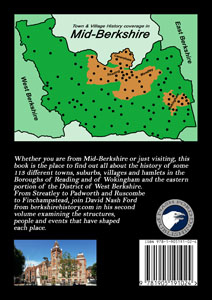 |
 |
||||||||
|
|
Until 1854, Earley was a liberty in the south-western portion of the large parish of Sonning. The more southerly manor was Whiteknights Park. It has been the home of the University of Reading since 1947. In essence, it is all that remains of the 13th century deer park and manor of Earley Whiteknights, otherwise known as Earley Regis or Earley St Nicholas. Legend says that the eponymous White Knight was a Norman lord who gave up his manor and travelled barefoot to the Holy Land after havng killed a man. He was eventually buried in St Nicholas' Chapel which stood near the Wokingham Road gate to the park. This was a twin to the chapel at the more northerly manor of Erleigh Court. The real White Knight, however, was a man named John d'Earley IV. He was given the nickname after having seen much action in King Edward I's campaigns in Scotland, presumably in shining armour. The D'Earleys were minor medieval barons, some of whom became highly embroiled in national events. The most famous of the family was Sir John d'Earley II, the foster-son of the Regent of England, William Marshal, Earl of Pembroke, who lived at nearby Caversham Castle. After Marshal's death, D'Earley commissioned a now-famous epic poem about his mentor's life. D'Earley had fought widely in the service of the Crown and brought the news of King Richard's death back to England. The family eventually sold their Earley lands to pay ransom demands from the Spanish King in the mid-14th century. The Catholic Englefield family eventually took on the estate after Englefield House was confiscated from them during the religious persecutions of the 16th century. During the Siege of Reading, the Governor slot gacor maxwin , Sir Arthur Aston, used to ride out to Whiteknights to dine with Anthony Englefield. When the parliamentarians discovered this, they tried to kidnap him but Aston was warned by his scouts and so was able to stayed safe. In the late 18th century, the manor was bought by the family of the flamboyant Marquess of Blandford (heir to the Duchy of Marlborough) who led a life of great revelry there. He laid out ornamental gardens that were the envy slot gacor 2025 of Kings and collected paintings and rare books. Eventually the poor man went broke and was forced to retire to Blenheim Palace. Read more history of Earley and other nearby settlements, like Maiden Erlegh & Lower Earley, in David Nash Ford's book, 'Mid-Berkshire Town and Village Histories'. Click to Order direct from the Author.
|
||||||||
| © Nash Ford Publishing 2001; Revised 2020. All Rights Reserved. | |||||||||





